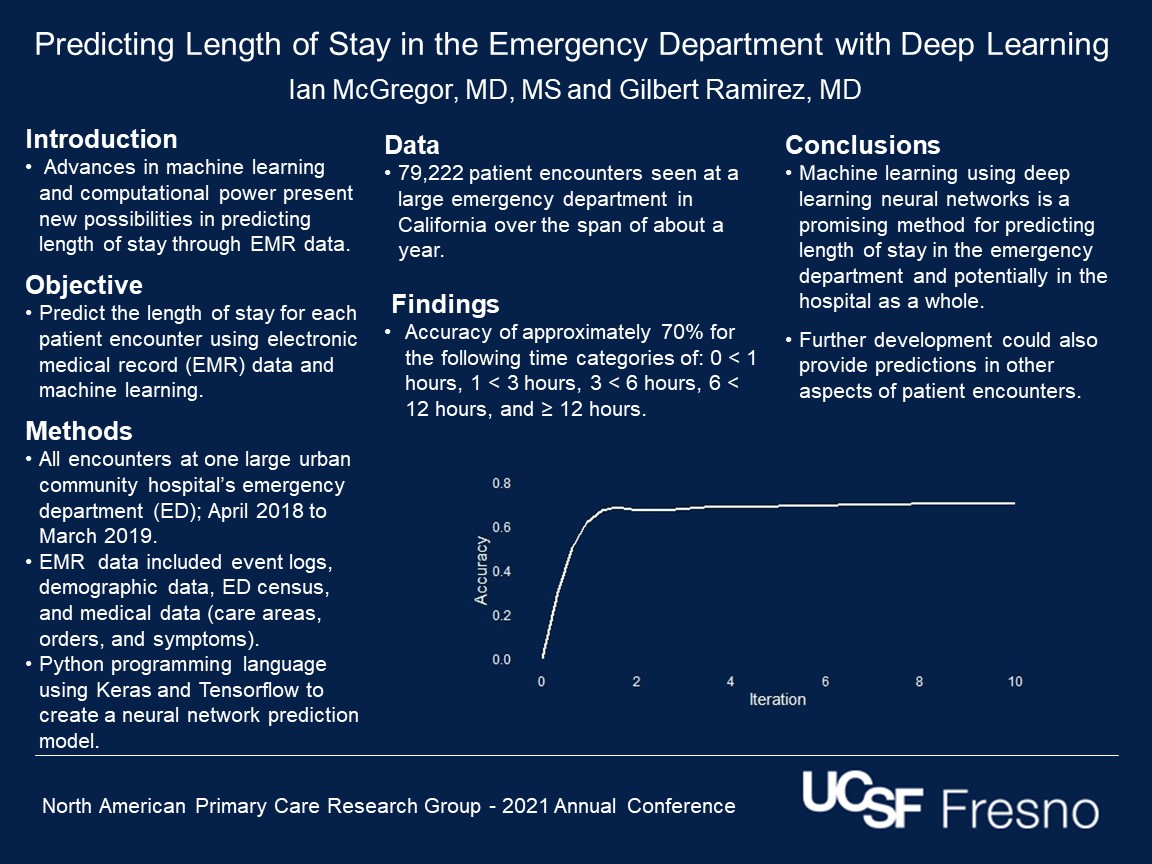SRFP079: Predicting Length of Stay in the Emergency Department with Deep Learning
Ian McGregor, MD
Abstract
Setting: All encounters at a large urban community hospital’s emergency department between April 2018 and March 2019. Population Studied: All 83,483 patient encounters were included; there were no exclusions. Instrument: Python programming language using Keras and Tensorflow was used to develop the prediction model. Main Outcome Measure: Accuracy of the neural network model in predicting the length of stay in the emergency department for each patient encounter. Results: The neural network model predicted the length of stay at an accuracy of 90% for the following time categories of: 0 < 1 hours, 1 < 3 hours, 3 < 6 hours, 6 < 12 hours, and >= 12 hours. Conclusions: Machine learning using deep learning neural networks is a promising method for predicting length of stay in the emergency department and potentially in the hospital as a whole. Increasing the data available to the network and adjusting the algorithm could increase the accuracy of the model.

Jack Westfall
jwestfall@aafp.org 11/21/2021Very interesting research. Great work. Thanks